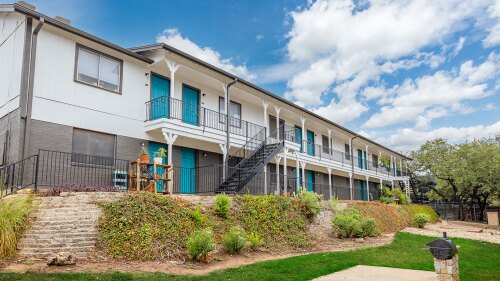“If they can do it, why not us?”
“They” refers to new entrants onto the commercial real estate mortgage lending stage. It appears that while we’ve been worrying about job growth and tapering, European hedge funds and private equity funds, searching for beta, have focused a portion of their resources on lending to many of the riskiest investment categories such as bridge loans and property development and construction. It makes good sense for these higher-risk players to focus on these underserved borrower sectors with no barriers to entry.
Members of the Association of Short Term Lenders funded £1.4 billion in 2013—a 39 percent year-over-year increase.
That, however, may be about to change as more and more capital, searching for yield, focuses on the commercial real estate lending business. Someone is going to figure out how to build a platform to navigate the underwriting maze efficiently while offering competitive rates.
U.S. mortgage real estate investment trusts (REITs) raised more than $23 billion, a portion of which was allocated to commercial lending. As long as yields on alternative investments remain at all-time low levels, real estate’s investment popularity will increase and the amount of funds allocated to commercial real estate lending will increase. Right now, lending by “nonlenders” is a “trade, not a business,” but this can change quickly.
“How Low Can They Go? Cap Rates, That Is. . . .”
Just when we thought it was safe to put our toes in the investment pond, we learn that capitalization rates continue to decline. According to a first-quarter 2014 survey of institutional investors and advisers, cap rates declined during the first quarter of 2014 in all the sectors except regional malls, power centers, and lodging, which increased 0.10 percent and 0.20 percent respectively.
The chart below shows the results of Real Estate Research Corporation’s study as well as compares first-quarter 2014 numbers with those from the fourth quarter of 2013. We think the chart speaks for itself.
| Property sector | 4Q 2013 | 1Q 2014 | Increase/decrease |
| Multifamily | 5.20% | 5.10% | –0.10% |
| CBD office | 5.80% | 5.60% | –0.20% |
| Suburban office | 7.00% | 6.90% | –0.10% |
| Regional malls | 6.00% | 6.10% | +0.10% |
| Neighborhood centers | 6.60% | 6.50% | –0.10% |
| Power centers | 6.90% | 7.00% | +0.10% |
| Warehouses | 6.40% | 6.20% | –0.20% |
| R & D | 7.40% | 7.10% | –0.30% |
| “Flex” industrial | 7.40% | 7.30% | –0.10% |
| Hospitality | 7.70% | 7.90% | +0.20% |
| All property | 6.64% | 6.57% | –0.07% |
Monday’s Numbers
The Trepp survey for the week ending April 25, 2014, showed rates basically unchanged during the past week. While competition is “fierce,” no one seems to have “gone stupid” yet. Some feel it is just a matter of time before someone breaks down and discipline in underwriting evaporates; others say it’s different this time, pointing to the fact that the commercial and multifamily real estate industry was not overbuilt at the start of the recent recession and therefore not a contributor to the “pain and suffering” of the 2007-to-2009 period.
Asking Spreads over U.S. Ten-Year Treasury Bonds in Basis Points | |||||||
12/31/09 | 12/31/10 | 12/31/11 | 12/31/12 | 12/31/13 | 4/25/14 | Month earlier | |
| Office | 342 | 214 | 210 | 210 | 162 | 150 | 154 |
| Retail | 326 | 207 | 207 | 192 | 160 | 140 | 142 |
| Multifamily | 318 | 188 | 202 | 182 | 157 | 134 | 137 |
| Industrial | 333 | 201 | 205 | 191 | 159 | 138 | 141 |
| Averagespread | 330 | 203 | 205 | 194 | 160 | 141 | 144 |
| 10-yearTreasury | 3.83% | 3.29% | 0.88% | 1.64% | 3.04% | 2.68% | 2.75% |
The Cushman & Wakefield (C&W) Equity, Debt, and Structured Finance Group’s monthly Capital Markets Update of commercial real estate mortgage spreads, dated April 3, 2014, showed spreads for Class A property coming in 5 to 10 basis points with spreads for Class B property coming in as much as 15 basis points as the market at all levels becomes increasingly competitive with lenders aggressively reducing spreads to win business. For now, advantage to the borrower.
In its comment accompanying the survey, C&W noted the following:
- It was recently reported that private real estate funds have more than $100 billion of “dry powder” focused on acquisitions of property located in North America. Assuming 50 percent leverage, that equals “buying power” of $200 billion, or 56 percent of 2013’s estimated total real estate sales transactions.
- Spreads for newly issued commercial mortgage–backed securities (CMBS) have remained stable to slightly tighter since January 1, 2014, with super-senior bonds trading inside 90 basis points and BBB-rated paper stable at swaps plus 345 to 395 basis points. Translated from the financial-speak, this means that spreads to borrowers continue to trend down, indicating that originators are finding it necessary to lower their profit to win business. Advantage to the borrower again.
Ten-Year Fixed-Rate Commercial Real Estate Mortgages (as of April 3, 2014) | |||
Property | Maximum loan-to-value | Class A | Class B |
| Multifamily (agency) | 75–80% | T +165 | T +170 |
| Multifamily (nonagency) | 70–75% | T +170 | T +180 |
| Anchored retail | 70–75% | T +195 | T +205 |
| Strip center | 65–70% | T +210 | T +220 |
| Distribution/warehouse | 65–70% | T +195 | T +205 |
| R&D/flex/industrial | 65–70% | T +205 | T +215 |
| Office | 65–75% | T +190 | T +200 |
| Full-service hotel | 55–65% | T +255 | T +275 |
| Debt-service-coverage ratio assumed to be greater than 1.35 to 1. | |||
Year-to-Date Public Equity Capital Markets
Dow Jones Industrial Average: –0.38%
Standard & Poor’s 500 Stock Index: +1.77%
NASD Composite Index (NASDAQ): –1.26%
Russell 2000: –2.99%
Morgan Stanley U.S. REIT Index: +9.93%
Year-to-Date Global CMBS Issuance (in $ billions as of 4/11/14) | ||
2014 | 2013 | |
| U.S. | $24.9 | $32.4 |
| Non-U.S. | 0.5 | 2.5 |
| Total | $25.4 | $34.9 |
| Source: Commercial Mortgage Alert. | ||
Year-to-Date Public U.S. Treasury Yields
U.S. Treasury Yields | |||
12/31/12 | 12/31/13 | 5/3/14 | |
| 3-month | 0.08% | 0.07% | 0.02% |
| 6-month | 0.12% | 0.10% | 0.06% |
| 2-year | 0.27% | 0.38% | 0.42% |
| 5-year | 0.76% | 1.75% | 1.66% |
| 7-year | 1.25% | 2.45% | 2.18% |
| 10-year | 1.86% | 3.04% | 2.59% |




